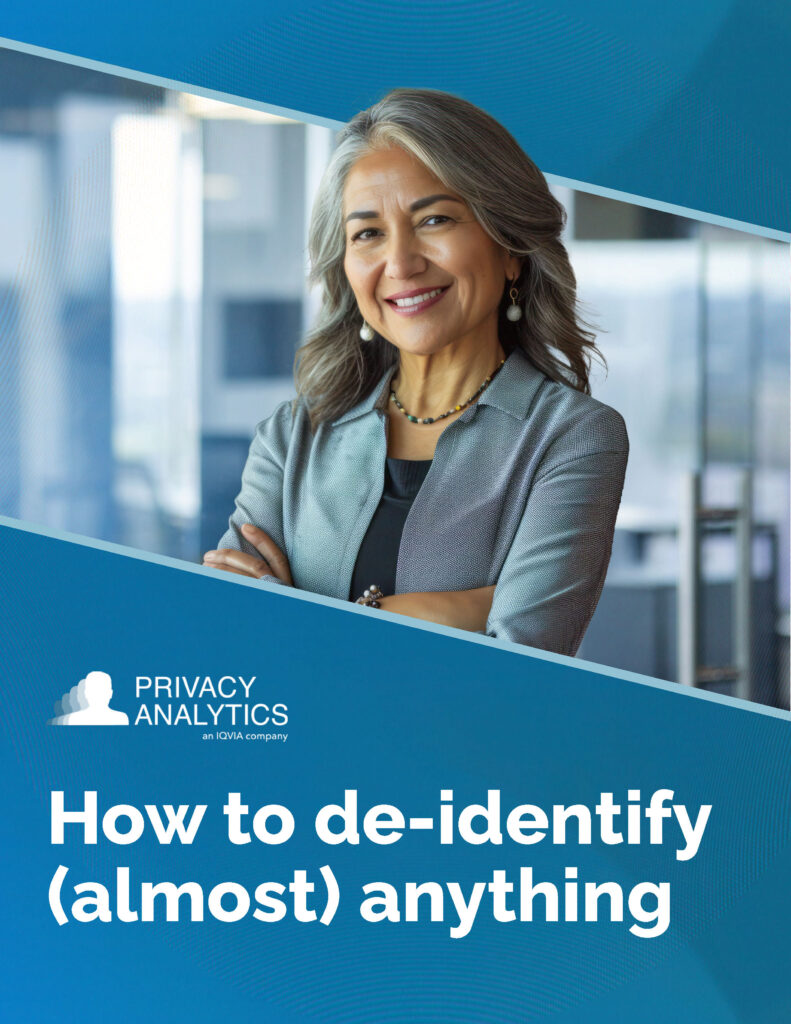Statistical de-identification is enjoying a rise in interest, driven by increased regulation and skyrocketing data demands fed by tokenization and linkage technology, as well as AI initiatives.
Understand the concepts for de-identifying even the most complex data—text, images, audio, and beyond—to keep pace with evolving privacy demands.
Gain valuable insights to inform scalable de-identification approaches, reducing risk, and ensuring compliance across your data initiatives.
- Privacy Analytics
- Resources
- White Papers
- How to de-identify (almost) anything
How to de-identify (almost) anything
More Resources
White Papers | Date: September 19, 2025
How to de-identify (almost) anything
Statistical de-identification is enjoying a rise in interest, driven by increased regulation and sky…
White Papers | Date: May 22, 2025
Top 5 Data Privacy Challenges
In today’s rapidly evolving data landscape, staying ahead of privacy challenges is crucial for any o…
White Papers | Date: August 21, 2024
10 Best Practices for ROI on HIPAA Expert Determination
The Health Insurance Portability and Accountability Act (HIPAA) requires de-identification experts t…
White Papers | Date: April 8, 2024
Differential Privacy and Risk Metrics for Creating Safe Data
Sensitive data can be reused in many ways to improve healthcare services, uncover new insights and o…
White Papers | Date: May 4, 2023
Good Governance for Anonymized Data
A lot of focus is given to data governance for personal data, and just as much focus can be given to…
White Papers | Date: April 3, 2023
5 Best Practices for Driving Value Through Data Stewardship
Privacy Analytics facilitates an Executive Advisory Board (EAB) comprised of 21 senior-level executi…
